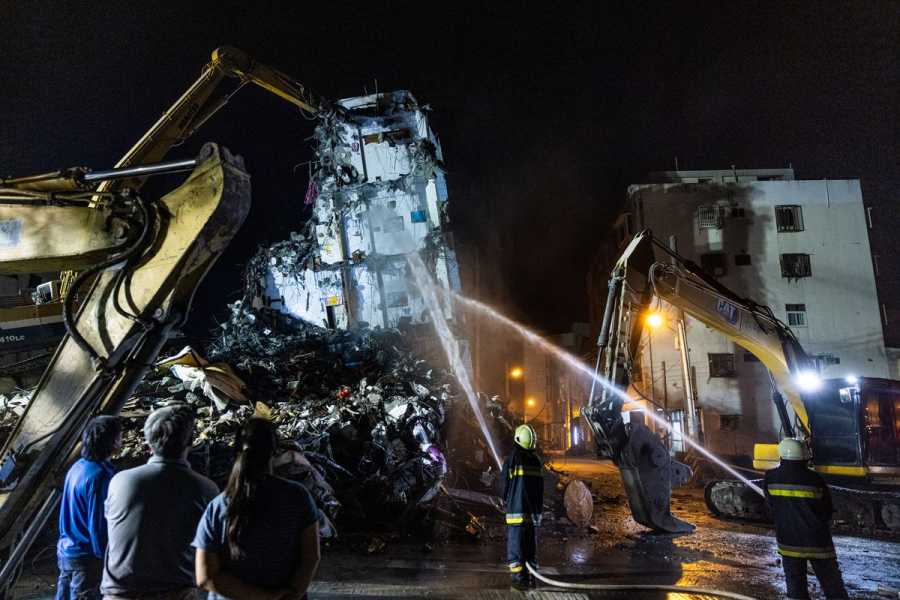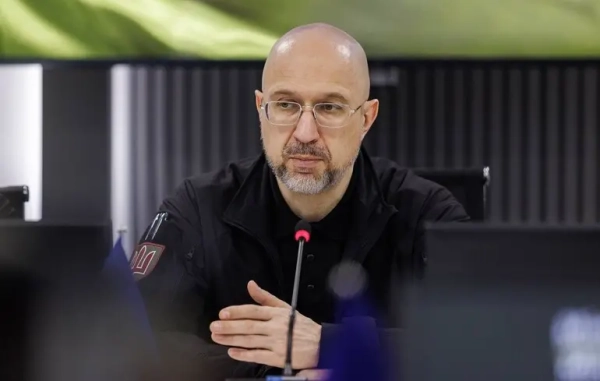From Taiwan to South Korea to Silicon Valley, some of the most important nodes in the global tech economy are in disaster-prone places.

Rescue teams demolish a building which collapsed following an earthquake on April 3, 2024 in Hualien, Taiwan. Annabelle Chih/Getty Images Bryan Walsh is an editorial director at Vox overseeing the climate, tech, and world teams, and is the editor of Vox’s Future Perfect section. He worked at Time magazine for 15 years as a foreign correspondent in Asia, a climate writer, and an international editor, and he wrote a book on existential risk.
When a 7.4-magnitude earthquake hit Taiwan’s eastern coast on April 3, the first concern involved the risk to people and property. Here, the news was not as dire as initially feared — only nine people have been reported killed as of Wednesday evening, along with hundreds of injuries. Considering that Wednesday’s quake was the strongest in Taiwan in 25 years — and that earthquakes of similar strength have killed tens of thousands of people or more in other countries — this could have been much worse.
Taiwan was largely able to withstand such a powerful quake because the island has taken earthquake preparation seriously, strengthening its building codes after past disasters and drilling its population in how to respond. The newest buildings tended to fare best — the 1,670-foot Taipei 101, the island’s tallest building and designed to dampen shaking in a quake, barely moved.
There was one other way in which Taiwan — and the world — avoided a worse outcome from the earthquake: the island’s all-important semiconductor manufacturing industry seemed to emerge largely intact. That’s good news — but it’s also a reminder of how fragile some of the most important nodes of the global economy remain.
The world’s computers can’t run without Taiwan
To say that Taiwan is important to the global tech industry is like saying oxygen is important to breathing. Taiwan as a whole is responsible for making 80 to 90 percent of the world’s most advanced computer chips — ones for which there is no current substitute. Taiwan’s TSMC makes up half of that production on its own, and 90 percent of the chips TSMC makes are produced in its 12 fabrication plants — or “fabs” — on the island.
Fortunately, all of those fabs are on the western side of the island, away from the epicenter of the April 3 quake. Even a slight vibration, though, is enough to throw off the highly sensitive work of semiconductor manufacturing, and some machinery was halted or even damaged. But TSMC reported that production was getting back to normal within a few hours of the quake.
Again, preparation made a difference — TSMC has invested heavily in earthquake resilience in its fabs, which the company says are designed well beyond code.
But part of the reason that Taiwan has made itself so resilient to earthquakes is that it has a long history of … earthquakes. The island sits on the Ring of Fire, which is the unusually cool name for the 25,000-mile long belt of volcanoes and earthquakes that surround the Pacific Ocean. As a result, Taiwan experiences around a thousand earthquakes per year that are strong enough to be felt, and many more that aren’t. And just last year Taipei discovered an actual active volcano within its city limits.
After a 1999 earthquake that did more damage to Taiwan’s chip-building infrastructure, the electronics industry was disrupted for weeks — and that was at a time when tech and computer chips were far less important to the global economy than they are today, when chips are found in everything from cars to refrigerators. A Credit Suisse analysis found that if TSMC’s operations were to be somehow shut down — perhaps by an even more massive quake — manufacturing across the global economy would be severely disrupted.
And, of course, earthquakes and volcanoes are just one threat to Taiwan’s semiconductor foundries. The better known one is just 80 miles across the Taiwan Strait, where the People’s Republic of China has made it increasingly clear that it could be willing to use military power to force reunification with what it regards as a renegade province. Should Taiwan’s chip foundries be destroyed in such a conflict, the damage to the global economy could be on par with the Great Depression.
The fragile points of global tech
Is it the safest thing in the world to concentrate production of perhaps the single most important manufactured component of the global economy on one island that faces existential threats of both the seismic and geopolitical varieties (plus the occasional typhoon)? Not really.
But Taiwan is hardly the only critical node in tech manufacturing that happens to be located in a risky part of the world.
South Korea is maybe the second-most important location for semiconductor fabrication after Taiwan, with a 60 percent market share of the memory chips used in PCs and smartphones, and is the home of the major global tech player Samsung. South Korea also abuts North Korea, a nuclear-armed state run by a dictator who appears to be increasingly flirting with the possibility of war on the Korean peninsula. It’s also at risk from storms and flooding, though at least its tectonics are fairly stable. (Maybe?)
How about Japan? It’s no longer the dominant player it was in the go-go 1980s, though the government has spent billions to bring more semiconductor manufacturing back to the country, and it now has about 10 percent of the global market. Japan is also one of the most disaster-prone countries on Earth — it’s at risk from earthquakes, volcanoes, tsunamis, and typhoons. And should a war with either North Korea or with China over Taiwan come to pass, Japan will surely be on the front line.
The US? Well, America hasn’t been a semiconductor hub in quite some time, though the Biden administration is trying its best to change that (with mixed success). But it’s worth noting that the intellectual nerve center of global tech, the Bay Area and Silicon Valley, sits on several major fault lines, including the San Andreas Fault. A major earthquake is a matter of when, not if.
Would it be better if more global tech manufacturing was concentrated in a safer place — like Syracuse, New York, perhaps the safest city in the US according to the Federal Emergency Management Agency’s National Risk Index? Sure. But that’s highly unlikely to happen.
The reality is that something as incredibly complex as the global tech manufacturing supply chain is inherently going to be fragile. The best we might be able to hope for is that the areas where we have concentrated that vulnerability take every step they can to prepare for that risk. Taiwan — at least when it comes to earthquakes — has done that.
Sourse: vox.com






